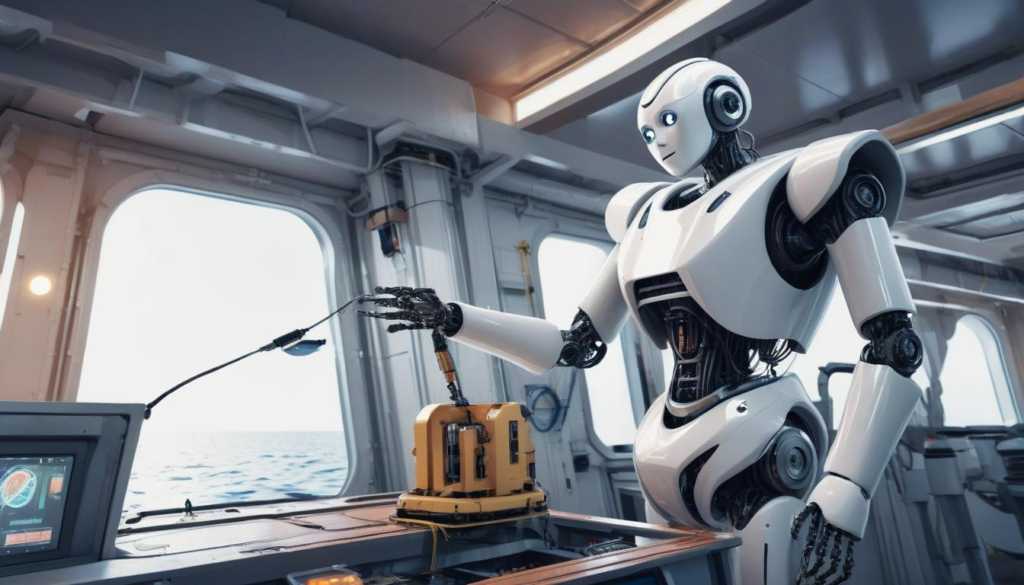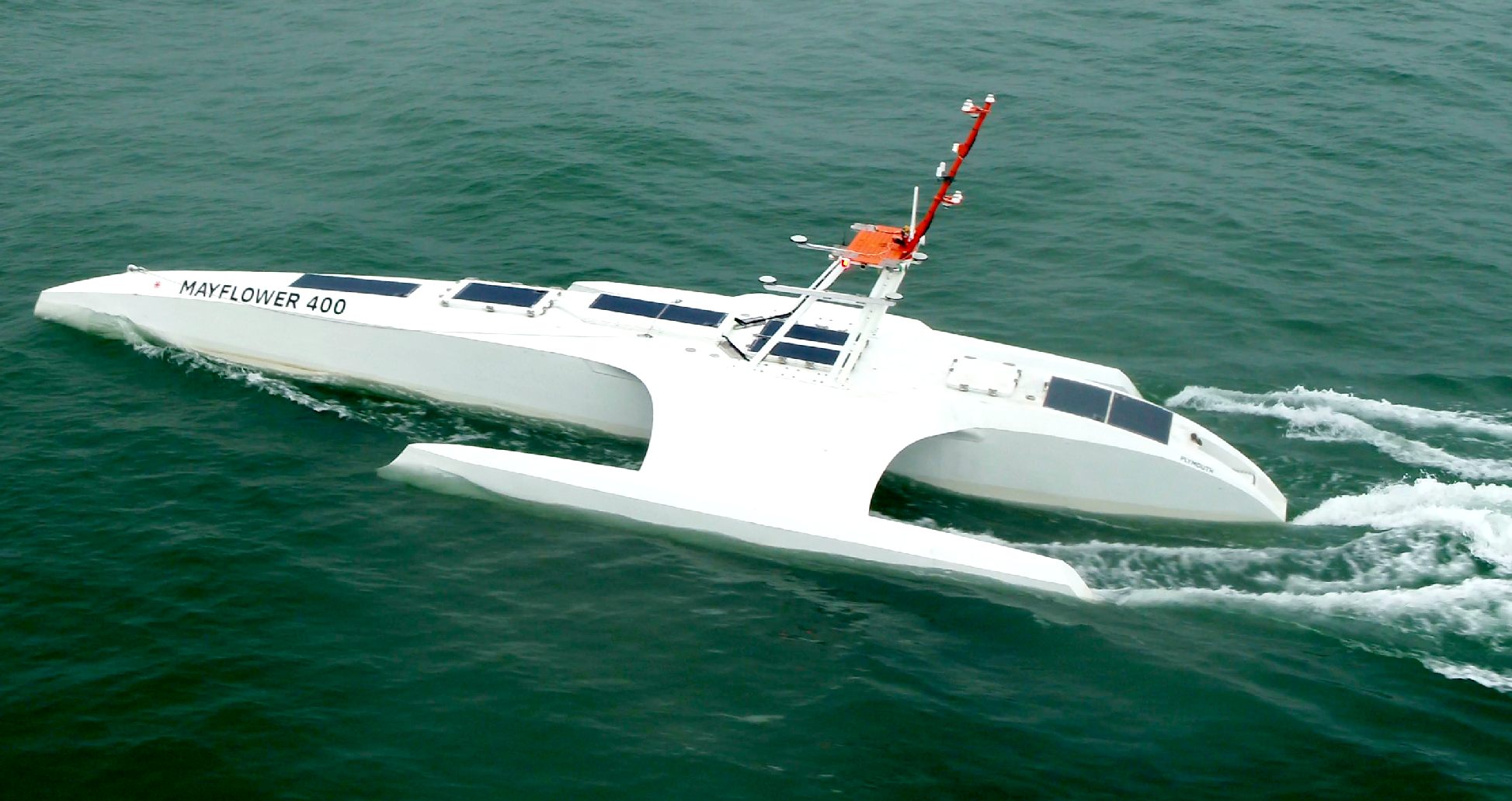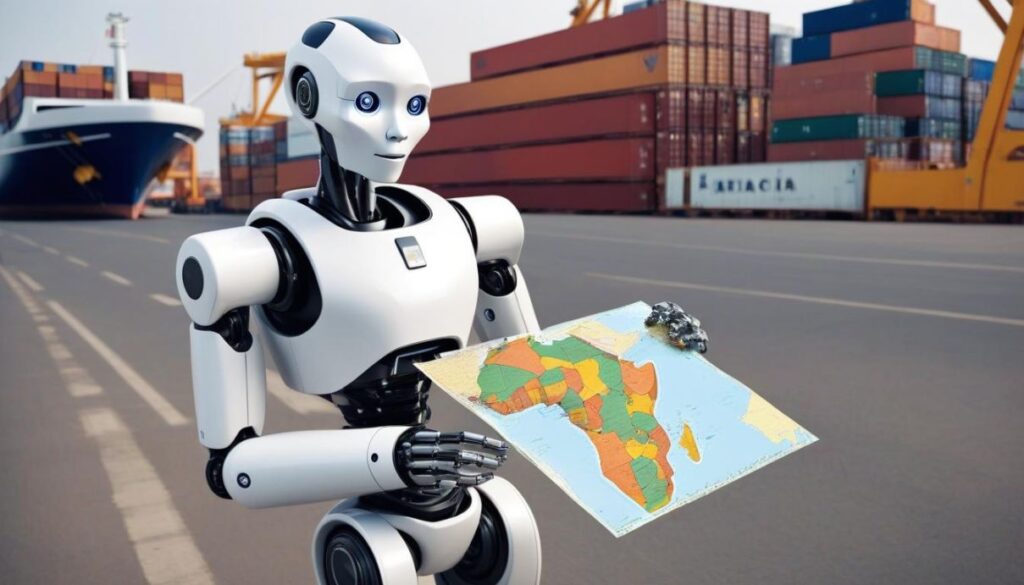Can Autonomous Ships Navigate Africa’s Complex Maritime Landscape?
Lessons from the Mayflower Case Study and the Future of Maritime Autonomy in Africa

In recent years, the shipping industry has witnessed a dramatic transformation with the advent of autonomous vessels. One of the most notable breakthroughs is the Mayflower 400, a pioneering unmanned ship that has navigated vast oceans using advanced technologies. This development raises an important question: Can autonomous ships effectively operate within Africa’s complex maritime environment? In this blog, we explore the global evolution of maritime autonomy, examine Africa’s unique challenges and opportunities, and discuss the potential impact on seafarers, policy frameworks, and the broader maritime economy.
Autonomous Shipping – A Global Revolution

Autonomous ships, powered by artificial intelligence, advanced sensors, and automated navigation systems, are reshaping how we think about maritime transport. These vessels promise enhanced safety, improved efficiency, and reduced operational costs. The Mayflower 400, for instance, completed a transatlantic voyage without a crew, demonstrating that technology can reliably manage navigation and environmental challenges. Its success has spurred global interest in unmanned vessels, with many experts heralding autonomous shipping as the future of maritime logistics.
However, while the Mayflower’s achievements have garnered significant attention, the technology is still evolving. Critical learnings from its journey include the importance of robust sensor networks, real-time data processing, and the necessity of human oversight in unforeseen circumstances. These lessons are crucial as the industry seeks to extend the benefits of autonomy to new markets, particularly in regions with distinct operational challenges.
Africa’s Maritime Landscape – Opportunities and Challenges
Africa’s maritime environment is as diverse as it is dynamic. The continent is home to some of the world’s busiest shipping lanes and rapidly growing port facilities, yet it faces considerable challenges:
a. Infrastructure Gaps:
Many African ports still operate with limited technological support compared to their counterparts in more developed regions. This disparity can impede the seamless integration of advanced autonomous systems.
b. Regulatory Complexities:
The maritime regulations across African nations vary widely. Harmonizing these laws to accommodate autonomous shipping will require significant policy innovation and international collaboration.
c. Security Concerns:
Issues such as piracy, regional conflicts, and varying enforcement capabilities add layers of complexity that autonomous systems must be engineered to handle.
d. Environmental Factors:
Africa’s diverse coastal conditions and weather patterns necessitate adaptive technology that can ensure safe navigation under variable circumstances.
Note
Despite these challenges, Africa presents substantial opportunities. The continent’s blue economy is on the rise, with increased investment in maritime infrastructure, offshore energy projects, and logistics innovations. Autonomous shipping could revolutionize these sectors by offering cost-effective, efficient, and environmentally friendly solutions.
✯The Future of Maritime Autonomy in Africa

Adapting global innovations like those demonstrated by the Mayflower to Africa’s context is both a challenge and an opportunity. Autonomous ships could offer significant benefits:
a. Efficiency and Safety:
By reducing human error and optimizing shipping routes, autonomous vessels can enhance safety and lower operational costs—a critical advantage for African trade routes.
b. Environmental Impact:
Intelligent route planning and fuel optimization can lead to lower emissions, aligning with global sustainability goals while mitigating the environmental challenges faced by African coastal regions.
c. Economic Transformation:
Autonomous shipping could stimulate growth in key sectors such as logistics, fisheries, and offshore energy. For African economies, this represents a pathway to increased competitiveness and integration into global trade networks.
Note
For stakeholders in Africa’s maritime industry, embracing autonomy will require not only technological adoption but also a rethinking of existing operational and regulatory models. Collaborative initiatives between governments, private enterprises, and technology providers—like AD Marina—will be crucial in navigating this transition.
✯ Impact on Seafarers and the Workforce
The introduction of autonomous ships inevitably raises questions about the future of seafaring. While some fear that automation may lead to job displacement, the reality is likely more nuanced:
a. Transformation, Not Replacement:
The shift towards automation can lead to the evolution of maritime roles rather than their outright elimination. Seafarers may transition to roles focused on system oversight, data analysis, and maintenance of autonomous systems.
b. Reskilling and Hybrid Models:
Industry stakeholders will need to invest in training programs to equip current maritime professionals with the skills necessary to operate and manage advanced technologies. Hybrid models that combine human expertise with automated systems may become the norm.
c. Maintaining the Human Element:
Despite significant advances in technology, human judgment remains indispensable—especially in complex or emergency situations. Thus, the future of maritime operations is likely to feature a collaborative model where technology and human expertise work hand in hand.
✯ Policy, Regulation, and Investment – Paving the Way
For autonomous shipping to thrive in Africa, a supportive policy and regulatory environment is essential. This involves:
a. Updating Maritime Laws:
Regulators need to develop new standards that address the unique challenges posed by autonomous vessels. International collaboration will be key in establishing uniform guidelines.
b. Government and Private Sector Collaboration:
Investments in maritime technology and infrastructure must be prioritized. Public-private partnerships can facilitate pilot projects that showcase the benefits and feasibility of autonomous shipping
c. Role of Industry Leaders:
Companies like AD Marina are well-positioned to lead this transformation. By advocating for innovative policies and investing in cutting-edge technology, industry leaders can help ensure that Africa not only adapts to but also benefits from the global shift toward autonomy.
✯ Conclusion
The journey of the Mayflower 400 has provided invaluable insights into the potential of autonomous shipping. As Africa continues to develop its maritime infrastructure and integrate advanced technologies, the promise of autonomous vessels becomes ever more tangible. While challenges remain—from regulatory hurdles to the need for workforce reskilling—the opportunities for increased efficiency, enhanced safety, and sustainable economic growth are immense.
As the industry evolves, the collaboration between technology providers, policymakers, and maritime professionals will be critical. At AD Marina, we believe that embracing innovation is the key to unlocking Africa’s maritime potential. We invite industry stakeholders, policymakers, and maritime professionals to join us in this transformative journey.
Are we ready to navigate the future with autonomous ships in Africa? Share your thoughts and join the conversation.


